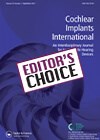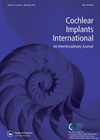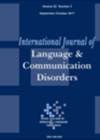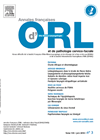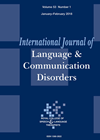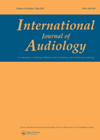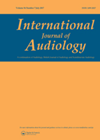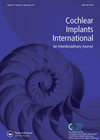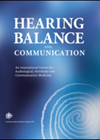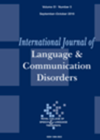
Journal Reviews
Third-party disability in cochlear implant users
Hearing loss causes changes for those experiencing it and the people who share in their everyday lives, often referred to as third party disability or caregiver burden. This study emphasises the notion that this phenomenon can be considered a disability,...
MRI scanning patients with cochlear implants and auditory brainstem implants
In the last five to six decades, MRI scanning has gone from physics experiments in Nottingham University through to Nobel prize-winning work by Sir Peter Mansfield and Paul Lauterbur, to a ‘routine’ imaging modality with an estimated 60 million MRI...
Contralateral OAEs in children
Several studies indicate that small changes in the medial olivocochlear (MOC) reflex may possibly be associated with certain pathologies. This could be measured by using contralateral acoustic stimulation (CAS) and observing suppression in otoacoustic emissions (OEAs). The main aim of...
Recording of electrode voltages (REVS) to determine extra-cochlear electrodes
Determining whether electrodes are sitting within the cochlea can be difficult as the checks run by the programming software cannot always determine this. In some cases, patients may be unable to give the audiologist detailed feedback which can complicate the...
Strategies to improve early development of vocabulary post-cochlear implantation
Cochlear Implantation (CI) is now the standard of care for rehabilitation of children with bilateral severe to profound sensorineural hearing loss. It improves the children’s linguistic input and helps them to develop language. The literature published so far has shown...
Hearing loss and QOL
This article evaluates the impact of hearing loss and its rehabilitation on the quality of life (QoL) of adults. The authors suggest that the currently used scale, Aphab, is long, complicated and does not take into account minor changes. The...
Lack of early vocabulary growth in bilateral cochlear implant children
Studies indicate that children with unilateral implantation may have delayed vocabulary development for long periods of time even after implantation. This Finnish study attempted to find out whether bilateral cochlear implantation was associated with earlier vocabulary development. The authors analysed...
Use of technological aids and interpretation services
Hearing loss attracts large interest among researchers all over the world due to its prevalence and negative psychological side-effects. Usually hearing loss is managed with hearing aids. However, there are several additional technologies that can be of great help for...
Single sided deafness and cochlear implants
Cochlear implants (CI) can restore hearing in the profoundly deaf ear. Risk/ benefit and cost considerations dictate strict criteria that must be met for patients to be eligible. People with single-sided deafness are not eligible to receive a cochlear implant...
Cochlear implantation in children with cognitive disabilities
Additional disabilities are frequently encountered in children born with hearing loss or deafness. A study from Denmark attempted to systematically review to what extent hearing-impaired children with cognitive disabilities benefit from cochlear implantation. The authors conducted an extensive search in...
Cochlear microphonics in children
Cochlear microphonics (CM) are generated mainly from outer hair cells and are routinely tested in children with hearing loss in some parts of the world. In this retrospective study, the aim was to compare the cochlear microphonics features (mainly CM...
Comparison of linguistic profiles in three groups of children with hearing loss and specific language impairment
Spoken language deficits in children with hearing loss early in life are attributed to auditory speech perception limitations. It is assumed that hearing following cochlear implants (CIs) will improve these language deficits. However, the studies have shown that although cochlear...


